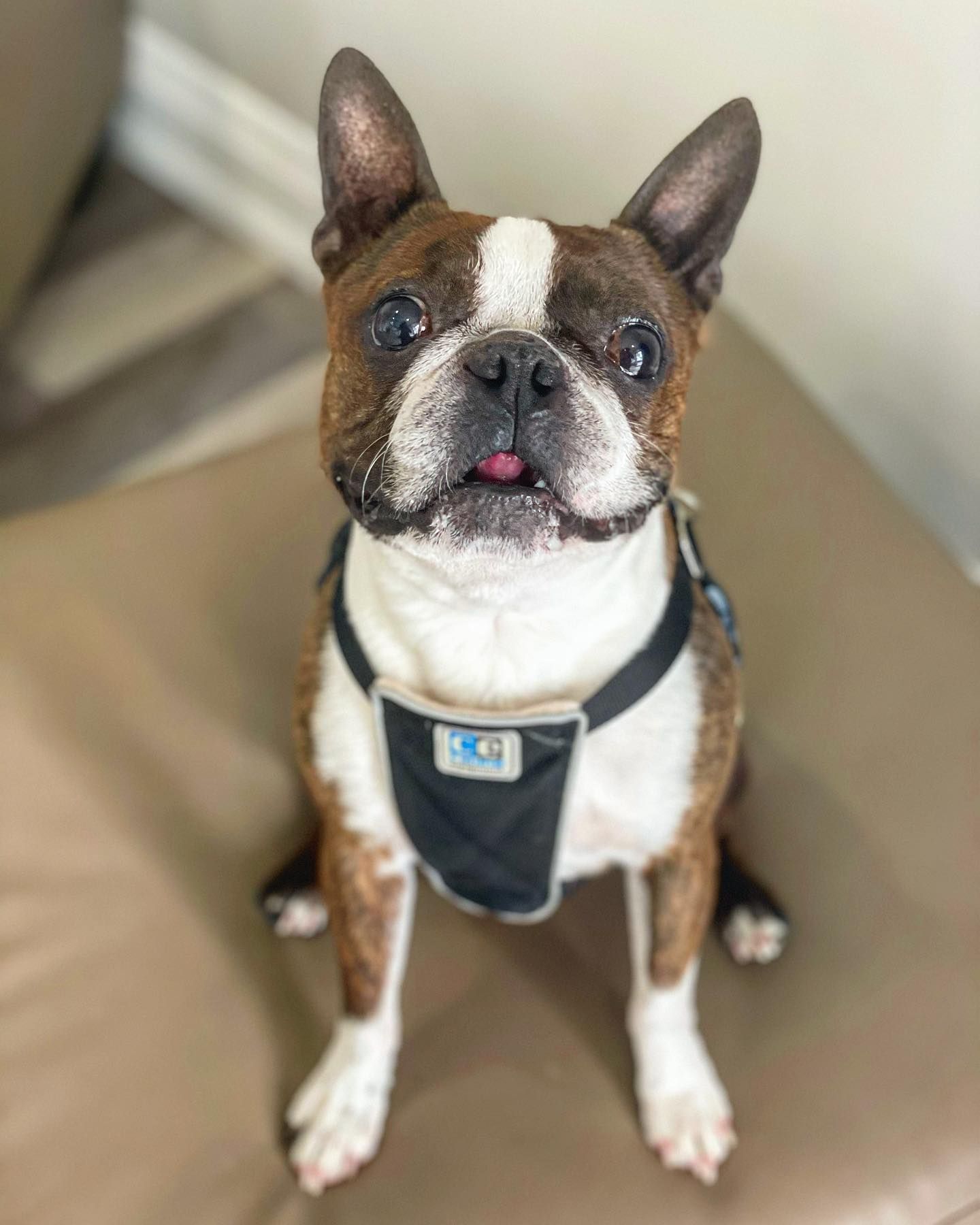TIPS FOR MAKING YOUR CAT’S VISIT TO THE VET IN OAKVILLE A FEAR FREE EXPERIENCE
Step 1: Making the carrier their friend and not a sign to run and hide!
- Start as soon as possible, e.g from a young age or days to weeks before the next visit. There is no time like the present!
- Make the carrier an additional piece of furniture.
- Choose a place your cat likes to rest and teach them it is an even better place because the carrier is there.
- Most cats will prefer the carrier to be placed on an elevated surface rather than on the floor.
- Try taking the top half of the carrier off so it’s more open.
- Once a location has been selected and thoughtfully placed attract your cat to the carrier. Play and feed your cat in or near the carrier. Place treats, catnip and toys inside. You can even try placing a pheromone infused towel / bed and an object of clothing with their human family’s scent inside the carrier.
- If possible, try not to pull your cat out of their hiding place and place them straight into the carrier. This only confirms they were right to dislike the carrier.
Step 2: Time for transport
- Try not to use the handle on the carrier, the motion may upset your cat.
- Hold the carrier close to your chest. Hold the carrier like it is carrying the valuable gift your cat truly is.
- Try playing familiar and soothing music on a low level in the car.
- Place the carrier in the footwell of the car, ideally, behind the passenger seat. There are usually less vibrations in this area and less room for slipping.
- Try to delay feeding your cat until after her trip to the vet. If he/ she is hungry then the treats she is given for being in the carrier or at the vet’s will be even more valuable.
DOWNLOAD INFORMATION PDF:
Pet Owner Handout: How to take the Fear our of the trip to the vet.
DOWNLOAD INFORMATION PDF:
Pet Owner Handout: Preparing for the vet visit
Reference: Fear Free Pets https://fearfreepets.com/
Leave a Reply.
SIGN UP TODAY!
Thank you for contacting us.
We will get back to you as soon as possible.
We will get back to you as soon as possible.
Oops, there was an error sending your message.
Please try again later.
Please try again later.

By CY Mac
•
03 Aug, 2023
August is Itchy Pet Awareness Month! This month was created to help unite pet owners and veterinarians in managing pets with skin conditions. We want to empower pet owners with the resources to identify signs of concern in their pets, and get the veterinary care they need to provide rapid and lasting itch relief. Did you know that allergic/atopic dermatitis (dry, itchy, inflamed skin) is the number one reason for veterinary visits? Even knowing this there are still an alarmingly large number of pets that go untreated by a veterinarian every year, often simply because owners are unaware of what to look for. Your pet’s itch could be caused by: Flea allergy Environmental indoor and outdoor allergens Food allergy Contact allergy Parasites such as fleas and mites Bacterial or yeast infections Remember, all pets will scratch, lick, bite, and rub. But if it is becoming more frequent or excessive, it may be a sign of an allergic itch. Signs of Itch Include: Excessive scratching. Biting, chewing, rubbing or scooting Frequent licking Recurrent ear problems Hair loss Body odor Skin changes Because the frequency at which something occurs is subjective and will vary depending on who you ask, we often refer to the Canadian Academy of Veterinary Dermatology Itch Scale . It is an incredibly helpful tool for us to be able to objectively measure the severity of itching. Early treatment is always preferred in these types of cases. Severe, prolonged scratching can damage the bond between pets and their owners by interfering with normal activities and increasing stress in pets themselves. It’s not uncommon that pet owners will experience stress, anxiety, and frustration about their pets itch. Especially when they know their pet is uncomfortable but aren’t sure how to help. Check out our Dermatology Page for more information and resources. If your pet is itching for help, don’t wait. Reach out to the M.A.C. team today at 905-208-9933 or at reception@macvets.com to see how to get help for your pet’s itch, fast.

By CY Mac
•
20 Jul, 2023
Many people love spending the long, warm days of summer outside with our canine companions, but being outside without the proper precautions in hot weather can be dangerous for our pets. Here are some of our top tips for keeping your pup cool in the heat: Adjust your walking routine Aim to go for walks either early in the morning, or later at night when it’s cooler. If you do choose to walk during the day, remember to check the temperature of the pavement. A good rule of thumb is that if it’s too hot for you to walk on it comfortably in bare feet, then it’s too hot for your puppy's paws! Provide lots of fresh, cool water Dogs can get dehydrated quickly, and it is therefore important to ensure there is always water easily accessible. Remember to take some on the go with you, even for just short walks. Provide cool surfaces to lie on A cool, damp towel is an inexpensive and easy solution. Reduce the amount of walking and exercise Even though it is tempting to keep our little ones' routine the same, their safety is more important. Providing activities indoors such as puzzle feeders or long lasting lick toys will help to keep them calm and occupied. Provide water playtime Try setting up a sprinkler or kiddie pool (preferably in the shade) to let them play in while supervised. Prevent sunburn Did you know that dogs can get sunburnt too? Those more prone are those with no hair, with white or thin coats, and dogs with light pigmented noses and eyelids. Applying a pet safe sunscreen or keeping them indoors is best.
Street Address : 1026 Speers Road
City : Oakville
State / Province : Ontario
Postal / Zip Code : L6L 2X4
HOURS
Monday: 9:00 am - 6:00 pm
Tuesday: 9:00 am - 6:00 pm
Wednesday: 9:00 am - 7:00 pm
Thursday: 9:00 am - 5:00 pm
Friday: 9:00 am - 5:00 pm
Saturday: Closed
Sunday: Closed
SERVICES
© Copyright 2024 - All Rights Reserved - Mac Animal Clinic | Cancellation Policy | MyPortal™


